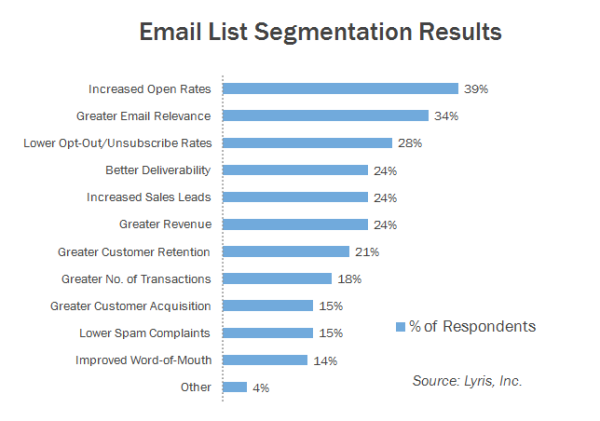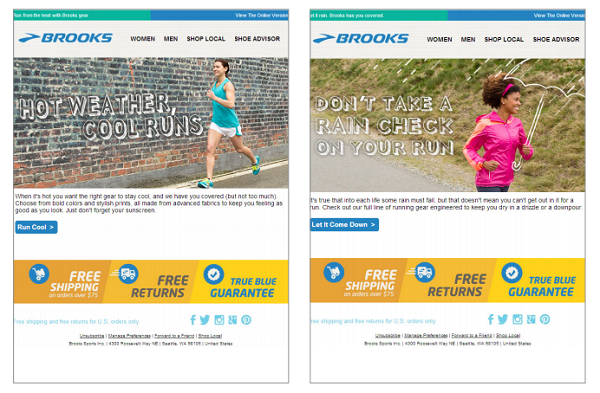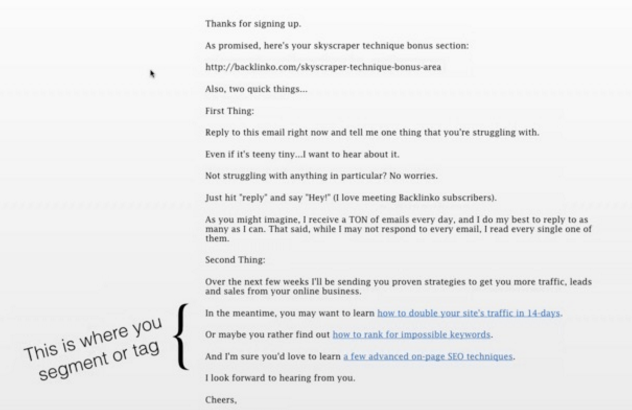Here’s Why Your Opt-Ins are Unsubscribing (And How to Fix It)
Email marketing is a hugely valuable tool.
In fact, according to the Direct Marketing Association, email marketing brings in around $40 for every $1 you spend, making it one of the highest ROIs for any time of marketing out there.
It can be reasonably assumed that the whole point in capturing emails and having subscribers is to convert those emails into loyal customers who either buy your product or service or tell their friends to buy your product or service (or both).

Even if you’re just running a blog or a content site, those emails are everything. So what happens if all of a sudden you’re not getting as many subscribers as you once did?
Or worse yet, what happens when people that have already subscribed start to opt-out of receiving your emails?
Here are a few of the most common reasons people are opting-out of your email lists, plus what you can do to stop that from happening.
They’re Not In a List
The biggest problem when it comes to opt-ins is not having opt-ins (or opt-outs) because all of your emails go to all of your subscribers.
Not having any form of segmentation is a one-way ticket to unsubscribers, but if you’re running your email campaigns yourself, it can be tricky to manage all of those lists. That’s where third-party email marketing services can help.
Where to Send Your Form Submissions
If you’re using WordPress, you can use plugins like MailPoet or Newsletter to create real email system that allow you to create newsletters, automated emails, post notifications and more directly from WordPress while allowing you to segment your lists (to some degree, anyway).
If you really want to segment your lists, you can use a email service like MailChimp, Constant Contact, or AWeber (etc.) and integrate them with your CMS of choice using Zapier to create targeted emails to certain lists.
Whichever method you choose isn’t really as important as having some plan in place for your emails once they’ve been submitted on your site.
They’re In the Wrong List
Once you’ve warmed up to the idea of segmenting your lists, then comes the hard part. You have to figure out exactly which emails belong in which list.
The whole point of segmentation is to provide relevant content to the recipients, so if someone opted in to get your monthly newsletter but you send them promotional emails about events instead, your likelihood of unsubscribing is high.
So how do you segment your lists for better results?
How to Segment Your List
Welcome emails should, for example, go to your new subscribers or users. But you can also send a version of a welcome email – either a “we miss you” or “are you still there?” email – to those who haven’t been actively opening your emails.
Keeping track of those lists may be a little trickier, but if you’re using a third-party email marketing service like MailChimp (or similar), they often keep track of those lists for you.
But there are other ways to segment your lists that you may not have considered, including:
- Demographics – Age, gender, company, position, etc.
- Sending frequency – Some people want emails more frequently than others
- Location – Knowing something as simple as a location can help you gauge send times and even personalize subject lines for better open-rates
- Email activity – Some people stop opening emails after a certain point, which can be helpful to know in order to send a “we miss you” email to reactivate their interest

There are many different ways to segment a list, but the most important part of that segmentation is not just getting them into a list, but also getting them the right content for that list to keep them engaged.
They’re Getting the Wrong Content
The average email user sends and receives around 105 emails per day, with 81% of those emails containing valid content (as in, not spam). This means that while sending out emails is a great way to capture your audience’s attention, it’s also ground zero for competition.
One of the biggest factors when it comes to people unsubscribing from your lists is that they’re simply being overwhelmed with content that doesn’t relate to them. Thankfully, there are a few easy ways to fix that by targeting your content more dynamically.
Types of Content to Send to Each List
Newsletters often go out to anyone in your email list, but some do a good job of separating their newsletter lists from their general email lists, so only the people who want the newsletter actually get it. But you can take this a step further by actually creating targeted newsletters based on niche topics and segmenting your list further.
One way to implement this strategy is to include separate opt-in messages in your welcome email, also known as an opt-in bribe.

Each link in your welcome email could lead to a different list so your subscribers are essentially telling you exactly what they want from your emails. Here are a few different types of content you can send to varying lists:
- Welcome Email
- Expectation Email
- Tools and Resources Email
- How-To Email
- Getting to Know You Email
- Unexpected Freebie Email
- Exclusive Content Email
- Basic Content Email
- Archive Email
- Curated Email
- Newsletter
- Buzz-Building Email
- Testimonial Emails
- Favorite Things Email
The truly important thing to remember is that the type of content you send out should reflect the list it’s being sent to. You wouldn’t send a welcome email to someone who’s been a subscriber for years.
Likewise, you shouldn’t send a newsletter to someone who just wants to know about events (unless your newsletter is all about your events).
Sometimes targeting certain content to different groups is a matter of trial and error, so it’s important to keep track of open-rates and watch your demographics (and other factors) closely to see what works and what doesn’t work.
Final Thoughts
When it comes to improving your conversion rates, there’s really no better tool than email marketing. But what you do with your content and your segmented lists makes all the difference between effective and ineffective marketing.
First, if you’re not segmenting your lists, get on it ASAP.
Second, once your lists are segmented, make sure that every email is where it’s suppose to be and every one who has opted in to your lists wants to be there.
Finally, make sure that the content you send to each list is relevant to the interests of those lists. If you’re not sure if it’s engaging enough, try targeting your email opt-in links in your welcome emails (or any email) to narrow down the field.